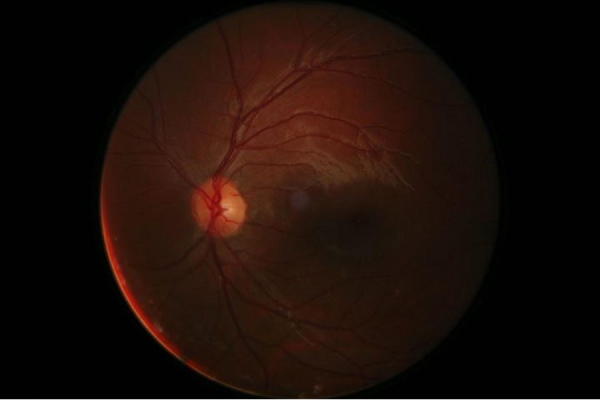Best disease, also known as vitelliform macular dystrophy, is another inherited macular degeneration. As the macula is in the centre of the retina, it affects central vision (reading, face recognition etc).
It is usually diagnosed during the teenage years, but vision does not generally deteriorate until later in life.
The progression of visual loss varies between individuals, but peripheral vision usually remains unaffected. Therefore, there are usually minimal issues with independent mobility.

How is Best disease identified?
Best disease has a characteristic clinical appearance, where the retina has a yellow, egg-yolk-like lesion at the macula in the early stages of disease (known as a vitelliform lesion).
In later stages, this lesion breaks down and takes the appearance of “scrambled eggs” – this is known as the vitellidisruptive stage.
Vision loss can occur during both stages of this disease and is permanent once it occurs.
What are the symptoms?
The first symptoms can vary from person to person, but always involve the central vision.
In the initial stages, a fatty yellow pigment (the vitelliform lesion) builds up in the cells underneath the macula.
Over time, the abnormal accumulation of this substance can damage the cone photoreceptor cells located in the macula, leading to a blurring or distortion of central vision.
Best disease generally doesn’t affect peripheral or side vision. It does not always affect both eyes equally, with one eye having milder symptoms in many cases.
What is the cause and how is it inherited?
Best disease is caused by mutations in the BEST1 gene and is passed down through an autosomal dominant pattern of inheritance.
In autosomal dominant inherited retinal disease one parent is affected, and each pregnancy has a 50% chance that the child will be affected. Males and females are equally affected. A person only needs one copy of the mutated gene to develop the inherited retinal disease.
Owing to the variable expression of the BEST1 mutation some people who have the mutation may have very mild, or sometimes no symptoms at all.
What treatments are available?
Currently, there are no treatments.
A number of emerging treatments are being developed that may assist in the future.
